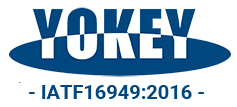Introduction
Against the backdrop of Tesla Model Y setting a new industry standard with IP68 – level window sealing performance and BYD Seal EV achieving a wind noise level below 60dB at a speed of 120km/h, automotive lifting edge seals are evolving from basic components to core technological modules in smart vehicles. According to data from the Society of Automotive Engineers of China in 2024, the global automotive sealing system market has reached a scale of 5.2 billion US dollars, with the proportion of intelligent sealing components rising to 37%.
I. Technical Deconstruction of Seals: Three – Dimensional Breakthroughs in Materials, Processes, and Intelligent Integration
Evolution of Material Systems
- Ethylene – Propylene – Diene Monomer (EPDM): A traditional mainstream material, it can withstand temperatures ranging from – 50°C to 150°C and has a UV resistance of 2000 hours (data from SAIC’s laboratory). However, it has a drawback of insufficient dynamic sealing life.
- Thermoplastic Elastomer (TPE): The new – generation mainstream material. Tesla Model 3 uses a three – layer composite structure (rigid skeleton + foam layer + wear – resistant coating), achieving a lifting cycle life of 150,000 times, a 300% increase compared to EPDM.
- Self – Healing Composite Materials: BASF has developed a micro – capsule technology that can automatically repair cracks up to 0.5mm. It is scheduled to be installed in Porsche’s pure – electric models in 2026.
Structural Classification Map
| Classification Dimension | Typical Structure | Performance Characteristics | Application Scenarios |
| Cross – Sectional Shape | Solid circular, hollow tubular, multi – lip composite | Pressure – bearing capacity of 8 – 15N/mm² | Static door sealing |
| Functional Positioning | Waterproof type (double – lip structure) | Leak – proof rating from IP67 to IP69K | New – energy battery compartments |
| Intelligent Integration Level | Basic type, sensor – embedded type | Pressure detection accuracy of ±0.03N | High – end intelligent cockpits |
Intelligent Manufacturing Processes
●Volkswagen ID.7 uses laser positioning for assembly, achieving an accuracy of ±0.1mm and eliminating 92% of lifting noises.
●Toyota’s TNGA platform modular design has increased maintenance efficiency by 70%, with a single – part replacement time of less than 20 minutes.
II. Analysis of Industrial Application Scenario Advantages: Technological Penetration from Passenger Cars to Special Fields
New – Energy Vehicle Field
●Waterproof Sealing: The sunroof system of XPeng X9 uses a four – layer labyrinth structure, achieving zero penetration under a rainfall of 100mm/h (certified by CATARC).
●Energy Consumption Control: Li L9 reduces the power consumption of window motors by 12% through low – friction – coefficient seals (μ ≤ 0.25).
Special – Purpose Vehicle Scenarios
●Heavy – Duty Trucks: Foton Auman EST is equipped with oil – resistant sealing components, maintaining an elastic modulus greater than 5MPa in an extremely cold environment of – 40°C.
●Off – Road Vehicles: Tank 500 Hi4 – T uses metal – reinforced seals, increasing the wading depth to 900mm.
Extension of Intelligent Manufacturing
●Bosch’s iSeal 4.0 system integrates 16 micro – sensors, enabling real – time monitoring and predictive maintenance of the sealing status.
●ZF’s blockchain traceability system can track 18 key data items such as raw material batches and production processes.
III. Directions of Technological Evolution: Industrial Changes Brought by Interdisciplinary Integration
Environmental Interaction Systems
Continental has developed a humidity – responsive sealing material with a water – swelling rate of up to 15%, which is planned to be used in Mercedes – Benz EQ series in 2027.
Sustainable Manufacturing Systems
Covestro’s bio – based TPU material has reduced its carbon footprint by 62% and has passed the supply – chain certification for BMW iX3.
Digital Twin Technology
The ANSYS simulation platform enables virtual testing of sealing systems, shortening the development cycle by 40% and reducing material waste by 75%.
Conclusion
From the molecular structure design of materials to the integration of intelligent networking systems, automotive seal technology is breaking through traditional boundaries. As Waymo’s autonomous driving fleet proposes a durability standard of 2 million cycles, this technological competition concerning 0.01 – millimeter precision will continue to drive the automotive industry towards higher reliability and intelligence.
Post time: Apr-24-2025

